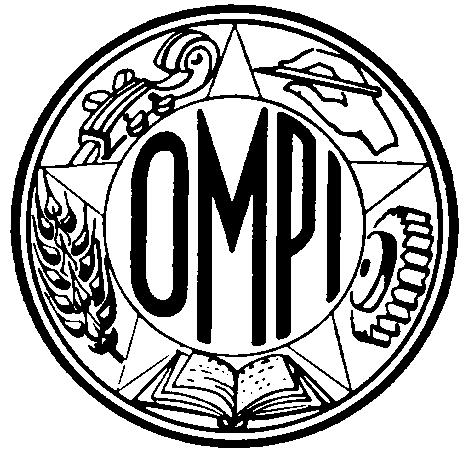template for clinical research article 2 template for clinical research article manuscript preparation: authors of randomized clinica
Template for Clinical Research Article
2
Template for Clinical Research Article
Manuscript Preparation: Authors of randomized clinical trials must
adhere to the CONSORT guidelines; authors of descriptive or
observational studies must adhere to STROBE guidelines and complete
the STROBE checklist at the end of the template.
Title Page
*
Title: Your title should contain no more than 80 characters
including spaces.
*
Running title: Provide a running title less than 40 characters
including spaces.
*
Provide highest academic degree for all the authors.
*
Academic affiliations
*
Conflict of interest statement: Any and all personal or
institutional financial support related to the study must be noted
here; see guidelines for format.
*
If any author has consultancies, stock ownership, equity
interest, patent/licensing arrangements, etc.; if so please
note.
*
If you or any author have received or may receive any personal
payment or in-kind benefit or other professional benefits from a
commercial entity (e.g., serve as a consultant), please note,
"Each author () certifies that he or she has or may receive
payments or benefits from a commercial entity () related to this
work" and note the initials of those authors who received
funding in and the source in the parentheses.
*
If any author has directly received research funding and/or has
potential conflicts of interest, State "One or more of the
authors () has received funding from" and note the source and
the initials of those authors who received funding in the
parentheses.
*
If the institution of the authors has received any sort of
support related to the work state "The institution of the
authors () has received funding from" and note the source and
the initials of those authors who received funding in the
parentheses. If no author has received any financial support
please note, "Each author certifies that he or she has no
commercial associations (e.g., consultancies, stock ownership,
equity interest, patent/licensing arrangements, etc.) that might
pose a conflict of interest in connection with the submitted
article."
*
Ethical Board Review statement: Institutional ethical board review
is required for any study involving humans, human material or
data, or animals; a statement of approval must be noted here; see
guidelines for format
*
Work performed at [Insert name of institution or institutions in
the case of authors from multiple institutions]
*
Word Count (Introduction through Discussion): Generally limit
manuscripts to fewer than 3000 words.
*
Corresponding author: Provide complete contact information for
corresponding author including phone, FAX, and e-mail address.
Abstract Your Abstract must be structured with the following five
sections and contain fewer than 250 words.
*
Background:
*
Questions/purposes:
*
Patients and Methods:
*
Results:
*
Conclusions:
Level of Evidence: Below Abstract provide a Level of Evidence and
study description for your primary research question (see Website for
guidelines). The study descriptions include one of the four types as
found in the guidelines. An example of the format is: “Level of
Evidence: Prognostic study, level II-1 (retrospective study). See the
Guidelines for Authors for a complete description of levels of
evidence.”
Introduction (maximum of 500 words)
*
All manuscripts must contain an Introduction, typically 3-4
paragraphs.
*
Prepare text and introduction in a question/purpose format: First
question or purpose must be designated as a primary research
question for assigning a Level of Evidence. Generally formulate no
more than 2-4 questions or purposes; each should be sufficiently
important that their answers would also appear in the Abstract.
*
One paragraph of background, one or two of rationale, and a final
paragraph only stating the questions or purposes of the study.
Patients and Methods
Authors must provide all relevant material in the STROBE guidelines at
end of template and complete the checklist. Generally use the
following order:
*
Study design
*
Relevant patient demographics
*
Power analysis (if more than one cohort)
*
Description of treatment or surgery
*
Description of postoperative treatment
*
Description of followup routine
*
Description of outcome measures
*
Statistical analysis if any; the description of a statistical
analysis must reflect the questions and study design.
Results (maximum of 500 words)
*
Begin with any paragraphs needed to persuade the reader of the
validity of your methods if using new or unvalidated methods, or
to report general findings of interest ( e.g.complications) not
related to a specifically posed questions. Then in the subsequent
paragraphs ensure a one-to-one correspondence of questions raised
in the Introduction and answers provided in Results.
*
Next provide one paragraph for each explicit question.
*
You may end with a paragraph or two of unanticipated results or a
description of complications.
Discussion (maximum of 1000 words)
*
Begin with a restatement of background and rationale then state
your questions or purposes.
*
Briefly explore each major study limitation.
*
Then compare and/or contrast your results with observations or
data from the literature. Write one paragraph of comparisons for
each question or purpose. When comparing substantial amounts of
data from the literature, provide a table or tables of comparative
data noting outcome times where relevant.
*
End with a synthesis of your results and those in the literature
rather than only conclusions from your own data.
Acknowledgments
Note any nonfinancial acknowledgments. Begin with, “The Authors wish
to thank…”
References
*
Ensure your references are complete and in alphabetical order and
proper format modified AMA style –for example:
Kurtz S, Ong K, Lau E, Mowat F, Halpern M. Projections of primary and
revision hip and knee arthroplasty in the United States from 2005 to
2030. J Bone Joint Surg Am. 2007;89:780-5
*
In-text citations should appear before commas and periods and
located in a sentence immediately after the point they are
documenting.
Legends
*
Provide brief legends to include the major point.
*
Figure legends should be written in complete sentences.
*
Illustrations with multiple figures (e.g., 1A, 1B, 1C) must be
labeled "A," "B," and "C" in the lower left hand corner. Each
figure requires a separate legend.
*
Figures should be uploaded and separately labeled in Editorial
Manager.
STROBE Guidelines for authors
To be used by authors of all observational clinical studies published
in HSS J. For this purpose a cohort study (the term used by STROBE) is
considered a longitudinal study typically reporting outcomes of
treatment in one or more cohorts; a case-control study is one
identifying factors in outcomes; a cross-sectional study is one to
identify the prevalence of factors or characteristics in a population
at a single point in time.
This table is modified from and used with the permission of The STROBE
Initiative, www.strobe-statement.org.
STROBE Statement—Checklist of items that should be included in reports
of case-control studies
Item No
Recommendation
Please insert check where included or N/A where not applicable
Title and abstract
1
(a) Indicate the study’s design with a commonly used term in the title
or the abstract
(b) Provide in the abstract an informative and balanced summary of
what was done and what was found
Introduction
Background/rationale
2
Explain the scientific background and rationale for the investigation
being reported
Objectives
3
State specific objectives, including any prespecified hypotheses
Methods
Study design
4
Present key elements of study design early in the paper
Setting
5
Describe the setting, locations, and relevant dates, including periods
of recruitment, treatment, follow-up, and data collection
Participants
6
(a) Cohort study—Give the eligibility criteria, and the sources and
methods of selection of participants. Describe methods of follow-up
Case-control study—Give the eligibility criteria, and the sources and
methods of case ascertainment and control selection. Give the
rationale for the choice of cases and controls
Cross-sectional study—Give the eligibility criteria, and the sources
and methods of selection of participants
(b) Cohort study—For matched studies, give matching criteria and
number of treated and untreated
Case-control study—For matched studies, give matching criteria and the
number of controls per case
Participants
13*
(a) Report numbers of individuals at each stage of study—eg numbers
potentially eligible, examined for eligibility, confirmed eligible,
included in the study, completing follow-up, and analysed
(b) Give reasons for non-participation at each stage
Descriptive data
14*
(a) Give characteristics of study participants (eg demographic,
clinical, social) and information on other treatments and potential
confounders
(b) Indicate number of participants with missing data for each
variable of interest
(c) Cohort study—Summarise follow-up time (eg, average and total
amount)
Variables
7
Clearly define all outcomes, treatments, predictors, potential
confounders, and effect modifiers. Give diagnostic criteria, if
applicable
Data sources/ measurement
8*
For each variable of interest, give sources of data and details of
methods of assessment (measurement). Describe comparability of
assessment methods if there is more than one group
Bias
9
Describe any efforts to address potential sources of bias
Study size
10
Explain how the study size was arrived at
Quantitative variables
11
Explain how quantitative variables were handled in the analyses. If
applicable, describe which groupings were chosen and why
Statistical methods
12
(a) Describe all statistical methods, including those used to control
for confounding
(b) Describe any methods used to examine subgroups and interactions
(c) Explain how missing data were addressed
(d) Cohort study—If applicable, explain how loss to follow-up was
addressed
Case-control study—If applicable, explain how matching of cases and
controls was addressed
Cross-sectional study—If applicable, describe analytical methods
taking account of sampling strategy
(e) Describe any sensitivity analyses
*Give information separately for cases and controls.
Note: An Explanation and Elaboration article discusses each checklist
item and gives methodological background and published examples of
transparent reporting. The STROBE checklist is best used in
conjunction with this article (freely available on the Web sites of
PLoS Medicine at http://www.plosmedicine.org/, Annals of Internal
Medicine at http://www.annals.org/, and Epidemiology at
http://www.epidem.com/). Information on the STROBE Initiative is
available at http://www.strobe-statement.org.
Modifications to STROBE Guidelines: We added a fourth column for
authors to check inclusion. You must include all items in your
manuscript unless the information is not applicable. Information on
the study cohort (Items 13 and 14 in the STROBE guidelines) should be
provided in Patients and Methods, not in Results; we have omitted the
portions of the STROBE guidelines related to Results and Discussion
(see our guidelines). The STROBE guidelines were developed for
epidemiological studies; “exposed” or “exposure” have been modified
with the words “treated” or “treatment
 GUIDANCE NOTE FOR THE MONITORING REPORT TEMPLATE GUIDANCE NOTE
GUIDANCE NOTE FOR THE MONITORING REPORT TEMPLATE GUIDANCE NOTE NONPROFIT FUNDING APPLICATION FY 20212022 NONPROFIT AGENCY PHYSICAL ADDRESS
NONPROFIT FUNDING APPLICATION FY 20212022 NONPROFIT AGENCY PHYSICAL ADDRESS MINISTRY OF DEFENCE DEFENCE INFRASTRUCTURE ORGANISATION MAJOR ® J
MINISTRY OF DEFENCE DEFENCE INFRASTRUCTURE ORGANISATION MAJOR ® J COMUNICAT DE PREMSA L’AGÈNCIA CATALANA DE L’AIGUA
COMUNICAT DE PREMSA L’AGÈNCIA CATALANA DE L’AIGUA WHITE EAGLE WARRIORS SWIM TEAM INFORMATION PACKET SUMMER
WHITE EAGLE WARRIORS SWIM TEAM INFORMATION PACKET SUMMER TEOREMA DE COOK EL HONOR DE SER EL “PRIMER”
TEOREMA DE COOK EL HONOR DE SER EL “PRIMER” COMMISSION OF THE EUROPEAN COMMUNITIES BRUSSELS SEC(2009) 7122 COMMISSION
COMMISSION OF THE EUROPEAN COMMUNITIES BRUSSELS SEC(2009) 7122 COMMISSION WIPOGRTKFIC89 PAGE 20 OMPI F WIPOGRTKFIC89 ORIGINAL ANGLAIS
WIPOGRTKFIC89 PAGE 20 OMPI F WIPOGRTKFIC89 ORIGINAL ANGLAIS